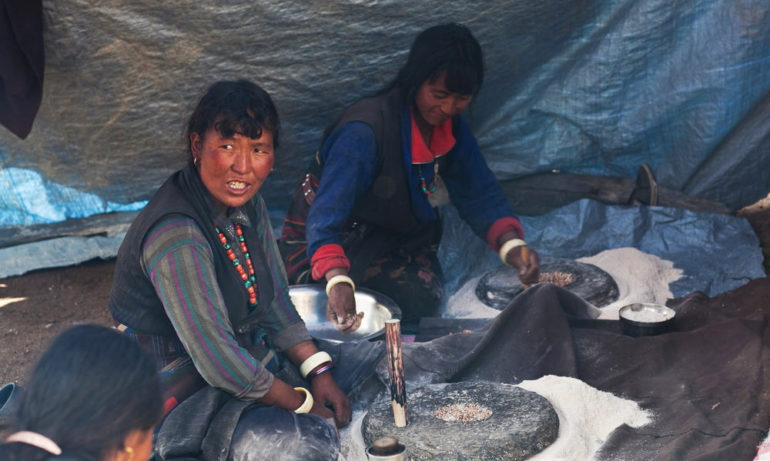A horrific 7.8 magnitude earthquake affected more than 1.4 million people in Nepal on April 25, 2015. The death toll from the earthquake could reach 10,000 people, according to Nepalese Prime Minister Sushil Koirala. Relief efforts and food aid have failed to reach many earthquake victims in remote areas.
The United Nations (UN) will release US$15 billion from its central emergency response fund, according to Farhan Haq, spokesperson for the UN. CARE International, having anticipated the possibility of a destructive quake in the region, has plans in place to distribute 75,000 ready-to-eat meals. CARE has worked on food security in Nepal since 1978. The UN World Food Programme (WFP) is also providing an incredible amount of food aid.
However, these efforts aren’t enough to provide for victims’ needs. Mark Leon Goldberg, editor of UN Dispatch, a global affairs blog, writes that an “unprecedented number of concurrent massive emergencies is undermining these agencies’ ability to adequately respond to any one of these crises—but not for lack of effort or ingenuity. Rather, the capacity of NGOs and UN agencies to respond is contingent on the generosity of donors. And right now, donors are not contributing on a scale anywhere near commensurate to worldwide needs.”
The Christian Science Monitor reports in Nepal, “the big challenge is in remote areas, closer to the epicenter of the earthquake,” according to Jamie McGoldrick, UN resident coordinator. Bad weather has persisted throughout the weekend, complicating efforts to reach remote areas. “The supplies need to be airdropped. Bringing them to us only adds to our problems,” said Krishna Gyawali, Chief Government Administrator of the Sindhupalchowk district, which had the single highest casualty rate. “We don’t have enough manpower. Many of the affected areas cannot be reached by roads.”
The United Nations Children’s Fund (UNICEF) estimates 1 million children will need humanitarian assistance as a result of the earthquake. Thomas Meyer, an engineer with the International Nepal Fellowship, predicts the disaster’s aftermath will stretch long into the future. “This is a long-term emergency,” he said. “This will need major attention for the next five years. People have nothing left.”
According to Oxfam America, 14 million people, or half of Nepal’s total population, live below the poverty line. The UN Food and Agriculture Organization (FAO) emphasizes that earthquakes directly affect food security, not only through homelessness and loss of income earners, but also through damage to crop yields, livestock, and irrigation systems. The United States Agency for International Development (USAID) confirmed it will make an additional US$9 million available for the recovery effort.
Sending money instead of material donations is often more effective due to the challenges of restoring transportation and communications; assessments of international aid to Haiti in 2010 and in the aftermath of the 2004 Pacific tsunami revealed that donations of perishable food and medical supplies overwhelmed distribution systems and went largely wasted thanks to inadequate infrastructure. Financial donations can be made directly to WFP, or to other international aid organizations through PayPal, which is not collecting credit card fees on the emergency donations. Goonj, an aid organization in India, is also shipping supplies to Nepal and accepting donated items through the mail.
“On a basic human level, you can’t control what happens in terms of natural disasters,” said Nicole Hark, deputy regional director of Lutheran World Relief for Asia and the Middle East. “Your heart goes out to people in this situation because it is something that could affect anyone.”













